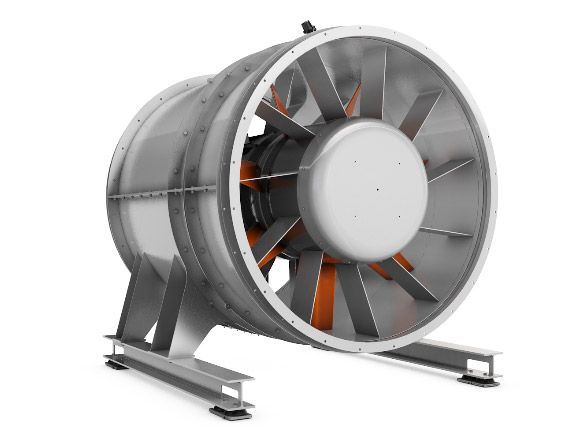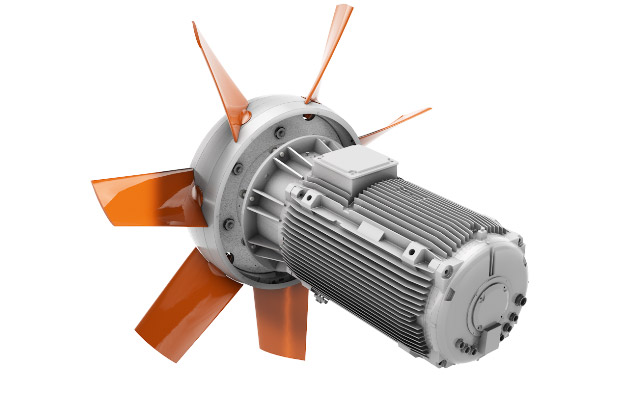A focus on efficiency within tunnel ventilation
2 September 2021Worldwide, electric motors represent around 50% of global electricity consumption (EU). The need to achieve a more sustainable environmental future clearly requires focus on the subject of motor efficiency. Any gains in motor efficiency will have a directly influence on the fight against climate change through reducing global electrical consumption and related CO2 emissions.
Within Europe, moves are already underway to increase efficiency. Last month, the new EU regulatory requirements came into effect. The ultimate goal is to double the efficiency of products (including electric motors) sold globally by 2030.
The means of realising this goal is a change to the required levels of efficiency as categorised by the International Efficiency standard 60034-30-1. Current commercially available motors are classified on their energy efficiency level ranging from standard (IE1) up to super premium (IE4). The new regulations mean that motors with a rated output between 0.75kW and 1000kW must now reach IE3 (premium) and those between 75kW and 200kW have to meet the higher IE4 standard by 2023.
In truth, efficiency has always been an important target for Howden’s design engineers driven by the need to provide customers with the best long-term performance and the lowest operational cost. Now, it combines with the commitment shared by customers to minimise consumption within the context of environmental protection.
So how does this translate to fans used within tunnel ventilation systems?
Total efficiency is a function of the various components of the ventilation solution. This incorporates the fan itself and the motor used to drive it. Howden aims to be best in class on efficiency and in fact, our designs are beyond the EU Ecodesign requirements. We supply fans with IE3 motors and are ready to provide IE4 as demanded.
The difference in efficiency between the two standards is 1% (IE3 motors providing 94-96% efficiency and IE4 raising this to 97%). Therefore, despite the significant global gain from an increase in class, within an individual system the fan is the biggest factor in efficiency level. Fan efficiency is the ratio between power transferred to airflow and the power used by the fan. Customer expectations have increased over the years with 65-70% once accepted, but 75% in forward flow (uni-directional) and 70% in reverse now becoming the norm.
Howden engineers fans to achieve market leading efficiency. The axial fan range is capable of up to 90% efficiency when configured for uni-directional flow and 80% when configured as a reversible fan.
The efficiency gains translate directly to lower power consumption and therefore also into operational cost savings. Clearly, lifetime running hours will vary between those for a fan used continuously for fresh air and those that are purely for emergency use.
Example: medium-sized axial fan with a flow of 150 m³/s and pressure increase of 1200 Pa | ||||
Configuration | Efficiency (Specified) | Efficiency (Howden) | Savings per 1000 operating hours (€)* | Lifetime savings per fan (€)** |
Uni-directional | 75% | 90% | € 5,263 | € 105,263 |
Reversible | 70% | 80% | € 4,229 | € 84,586 |
*15 kWh per operating hour and €0.125 per kWh **20 years @1k hours p.a. | ||||
Of course, another aspect of efficiency is ensuring that the appropriate amount of power is used relative to the demand. In the majority of installations, customers require Variable Frequency Drives (VFD) to be fitted with the fan. The VFD provides control over the operation of the fan, enabling the rotational speed to better match the required flow and reduce power consumption. The new regulations acknowledge this by applying IE2 to the VFD. Howden goes further in terms of operational control with Ventsim™. Ventsim automates fan operation based on dynamic operational data such as traffic flows and air quality. This links real-time operation with the actual conditions within the tunnel.
The greater the efficiency of all parts of the ventilation system, the lower the impact of energy use and related overall economics for ongoing operations. Howden supports customers throughout the decision making process concerning the most suitable fan selection and best operational controls.
Note: the focus of the article is axial fans. Jet fans are not subject to Ecodesign and thrust is the key criteria for such fans.

